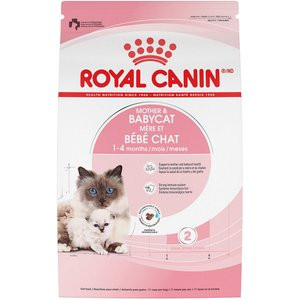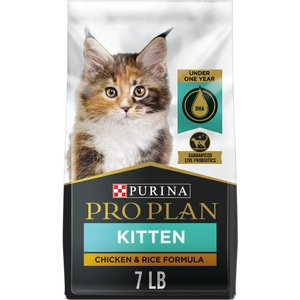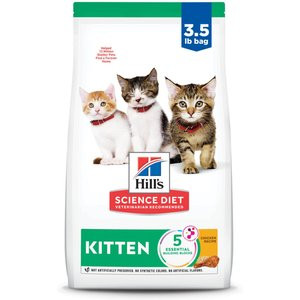Discovering that your feline friend is expecting can be a joyous surprise. Just like humans, cats experience pregnancy, and knowing what to expect is essential for ensuring the health and well-being of both the mother and her future litter of kittens. If you suspect your cat might be pregnant, you’re likely wondering how to confirm your suspicions. While those tiny meows and adorable kitten antics are still weeks away, understanding the early signs of pregnancy and the options for a Cat Pregnancy Test can provide clarity and allow you to prepare for this exciting journey.
This comprehensive guide will walk you through everything you need to know about cat pregnancy, from the initial signs and symptoms to the various methods of pregnancy confirmation, including the different types of cat pregnancy tests available. We’ll cover the duration of feline gestation, the stages of pregnancy, and how to best care for your expecting cat to ensure a smooth and healthy pregnancy.
Early Signs of Cat Pregnancy: What to Look For
In the early stages of pregnancy, discerning whether your cat is expecting can be challenging. As Dr. Kate Farmer, a veterinarian at the Animal Humane Society, points out, “Most people won’t pick up on any differences at all” in the initial weeks. This subtlety often leads to cat pregnancies being unexpected news for many owners. However, as the pregnancy progresses, certain behavioral and physical changes may become noticeable.
Behavioral Changes:
- Increased Affection or Friendliness: You might observe your cat becoming unusually cuddly and seeking more attention than usual. This can manifest as increased purring, rubbing against you, or wanting to be closer to you.
- Nesting Behavior: Pregnant cats often exhibit “nesting behavior,” which involves searching for quiet, secluded, and comfortable spots around the house. They might start exploring closets, drawers, or under beds, preparing a safe space for their kittens.
- Changes in Appetite and Energy Levels: Some pregnant cats may experience changes in appetite, either eating more or, in some cases, experiencing a temporary decrease due to morning sickness. Energy levels can also fluctuate; some cats might become more lethargic, while others remain active.
Physical Changes:
- Weight Gain and Growing Belly: As the pregnancy progresses, typically in the later stages, you’ll notice your cat gradually gaining weight. Her abdomen will start to become rounded and more prominent. However, this sign can be subtle initially and might be mistaken for general weight gain.
- Enlarged Mammary Glands and “Pinking Up” Nipples: One of the more noticeable physical signs is changes in the nipples, often referred to as “pinking up.” The nipples may become enlarged and more prominent, and the skin around them may turn a pink or rosy color. This typically occurs a few weeks into the pregnancy.
- Milk Production: Closer to the delivery date, you might observe milk leaking from your cat’s nipples. This indicates that her body is preparing for lactation and is a late-stage sign of pregnancy.
While these signs can be indicative of pregnancy, they are not definitive. Some of these symptoms can also be associated with other conditions. Therefore, if you suspect your cat is pregnant, confirming your suspicions with a cat pregnancy test is the next crucial step.
Confirming Your Suspicions: Cat Pregnancy Tests Explained
To definitively determine if your cat is pregnant, veterinary diagnostic tests are the most reliable methods. Dr. Farmer recommends consulting your veterinarian, who can perform several types of cat pregnancy tests to confirm the pregnancy.
1. Veterinary Examination (Manual Palpation):
This is often the earliest method a veterinarian can use to detect pregnancy. Around two to three weeks into gestation, an experienced vet can gently palpate (feel) your cat’s abdomen to check for the presence of developing kittens. At this stage, the kittens are usually palpable as small, grape-like shapes within the uterus.
2. Ultrasound for Cat Pregnancy:
Ultrasound is a non-invasive imaging technique that uses sound waves to create images of the inside of the body. In cats, ultrasounds are generally effective in detecting kitten heartbeats as early as three to four weeks into the pregnancy. This method provides visual confirmation of pregnancy and can also give an estimate of the kittens’ viability.
3. X-ray Cat Pregnancy Test:
X-rays utilize electromagnetic radiation to create images of dense tissues like bones. While X-rays aren’t useful in early pregnancy, they become effective around six weeks of gestation. At this stage, the skeletons of the kittens become mineralized and visible on X-ray images. X-rays are particularly helpful in determining the approximate number of kittens your cat is carrying, especially in later stages of pregnancy.
4. Hormonal Cat Pregnancy Blood Test:
A hormonal cat pregnancy test is available and can be performed via a blood draw. This test measures the levels of relaxin, a hormone produced by the placenta during pregnancy. According to Dr. Danielle Bernal, BVSc, MRCVS, this blood test can be administered 28 days or more after mating. It’s important to note that while this is a specific cat pregnancy test, due to the subtle early signs in cats, you might not be aware of the pregnancy early enough to request this test right away. As Dr. Farmer mentions, most cat pregnancies are often confirmed through physical examination or ultrasound because owners may not suspect pregnancy early enough for the hormonal test to be the initial step.
Each of these methods offers different advantages at various stages of pregnancy. Veterinary examination is a quick initial assessment, ultrasound provides early visual confirmation and viability check, X-rays are best for counting kittens later in pregnancy, and the hormonal blood test is a specific cat pregnancy test that becomes accurate after about a month of gestation. Consulting with your vet will help determine the most appropriate cat pregnancy test for your cat based on the suspected stage of pregnancy.
How Long Does Cat Pregnancy Last? (Gestation Period)
The gestation period for cats, the time from conception to birth, is relatively consistent. Dr. Farmer states that cat pregnancies typically last for 63 to 65 days, which is just over two months. This is shorter than human pregnancies but still involves significant developmental stages for the kittens.
Stages of Cat Pregnancy: A Trimester-Based Guide
While cats don’t have traditional trimesters in the same way humans do, it can be helpful to think of feline pregnancy in three stages to understand the key developments during each phase, as suggested by Dr. Bernal.
First Trimester (Weeks 1-4): Early Development
“Cats are known as induced ovulators,” explains Dr. Bernal, “meaning they do not ovulate and release an egg until the physical act of mating has occurred.” Once mating occurs and fertilization takes place, the first trimester is characterized by crucial early development.
- Fertilization and Implantation: In the first week or so, one or more fertilized eggs travel to the uterus and implant in the uterine lining.
- Embryonic Development: During weeks 2-4, the implanted embryos rapidly develop. Organs and body systems begin to form.
- Subtle External Signs: Externally, there are usually no obvious physical signs of pregnancy in your cat during these early weeks. As Dr. Bernal notes, “There might be some subtle behavioral changes, but external signs of pregnancy are not yet visible.”
- Ultrasound Detection: Towards the end of this stage, around week four, a veterinarian may be able to detect fetal heartbeats using an ultrasound, as mentioned by Dr. Farmer. This can provide early confirmation of pregnancy and fetal viability.
Second Trimester (Weeks 5-7): Noticeable Changes
The second trimester is when pregnancy becomes more apparent both through veterinary examination and observable changes in your cat.
- Fetal Development: During weeks 5-7, the developing kittens, now called fetuses, continue to grow and mature.
- Weight Gain and Belly Enlargement: This is the stage when you might start noticing your cat gaining weight and her abdomen becoming more rounded and distended, as mentioned by Dr. Bernal.
- Ultrasound Visibility: By this stage, kitten fetuses should be clearly visible on ultrasound, allowing for a more detailed assessment of their development.
- X-ray Detectable Skeletons: Around week six, the skeletons of the kittens begin to ossify, becoming visible on X-ray. This is when X-rays can be used to confirm pregnancy and potentially count the number of kittens.
Third Trimester (Weeks 8-9): Final Growth and Preparation for Birth
The final weeks of pregnancy are focused on the kittens’ final growth and the mother cat’s preparation for labor and delivery.
- Rapid Kitten Weight Gain: Dr. Bernal points out that kittens gain most of their weight during these last couple of weeks.
- Increased Maternal Size: Your cat’s belly will become noticeably larger as the kittens grow rapidly.
- Behavioral Changes: You might observe changes in your cat’s behavior, such as restlessness and increased nesting behavior as she seeks out a safe and comfortable place to give birth.
- Temperature Drop: Just before labor, typically within 24 hours, a pregnant cat’s body temperature will often drop by 1-2 degrees Fahrenheit, sometimes falling below 100°F. This temperature drop is a sign that labor is imminent.
- Approaching Birth: Birth usually occurs around day 65 of gestation, and most cats deliver their kittens within a timeframe of four to six hours, according to Dr. Bernal.
Understanding these stages helps you anticipate the changes your cat will go through during pregnancy and prepare accordingly, ensuring her comfort and health throughout.
Recognizing Cat Labor: Signs and What to Expect
Being aware of the signs that your cat is going into labor is important, although Dr. Farmer notes that these signs can sometimes be subtle and easily missed, especially if they occur at night or when the cat is alone in her nesting area.
Common Signs of Cat Labor:
- Restlessness: Your cat may become agitated, pacing, and unable to settle down.
- Nesting Behavior Intensifies: She will likely spend more time in her chosen nesting spot, rearranging bedding or exhibiting increased focus on the area.
- Loss of Appetite: Many cats will refuse food as labor approaches.
- Vocalization: Increased meowing, purring, or even howling can occur as labor begins.
- Rectal Temperature Drop: As mentioned earlier, a drop in rectal temperature is a key sign that labor is likely to start within 24 hours.
- Abdominal Contractions or White Discharge: You might observe visible abdominal contractions as labor progresses. A clear or white vaginal discharge may also be present.
Supporting Your Pregnant Cat: Care and Preparation
Providing proper care for your pregnant cat is crucial for her health and the well-being of her kittens.
1. Veterinary Care for Pregnant Cats:
- Initial Vet Visit: An early veterinary visit is essential to confirm the pregnancy and, depending on the stage, potentially determine the number of kittens.
- Medical Protocols: Your veterinarian will recommend appropriate medical care during pregnancy, including necessary vaccinations to protect both the mother and newborns from diseases.
- Deworming: Deworming is usually recommended to eliminate harmful intestinal parasites, as advised by Dr. Bernal.
2. Diet for Pregnant Cats:
- Transition to Kitten Food: Both Dr. Bernal and Dr. Farmer recommend switching your pregnant cat to a high-quality kitten food.
- Nutritional Needs: Kitten food is higher in calories, protein, and essential nutrients to support fetal development and the increased nutritional demands of pregnancy. Dr. Bernal emphasizes that “pregnant cats require a high-quality, highly digestible diet rich in protein and essential nutrients to support fetal development.”
- Gradual Increase in Food: Adjust the amount of food gradually throughout the pregnancy as your cat’s caloric needs increase. Consult your vet for specific feeding guidance.
Consider these vet-recommended kitten food options:
 Royal Canin Mother & Babycat Dry Cat Food, 6-lb bag
Royal Canin Mother & Babycat Dry Cat Food, 6-lb bag
Royal Canin Mother & Babycat Dry Cat Food, 6-lb bag
$41.99
 Purina Pro Plan Kitten Chicken & Rice Formula Dry Cat Food, 7-lb bag
Purina Pro Plan Kitten Chicken & Rice Formula Dry Cat Food, 7-lb bag
Purina Pro Plan Kitten Chicken & Rice Formula Dry Cat Food, 7-lb bag
$28.08
Hill’s Science Diet Kitten Healthy Development Chicken Recipe Cat Food, 3.5-lb bag
$21.99
3. Creating a Nesting Space:
- Prepare in Advance: Around four weeks before the expected delivery date, create a comfortable nesting area for your cat, as recommended by Dr. Bernal.
- Quiet and Comfortable Location: Choose a warm, quiet, and secluded spot away from household traffic, other pets, and loud noises, according to Dr. Farmer.
- Cozy Nesting Box: A cardboard box lined with soft blankets or towels makes an ideal nesting space.
By understanding the signs of pregnancy, utilizing cat pregnancy tests when needed, and providing appropriate care, you can support your cat through a healthy pregnancy and prepare for the arrival of her kittens. Remember to consult with your veterinarian for personalized advice and care throughout your cat’s pregnancy journey.

 Hill
Hill 